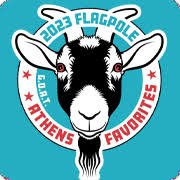The pearls I took from the course the “Anatomy of Trust” are vast. Trust is such an integral part of a relationship but often it’s difficult for me to put my finger on exactly why I do or do not trust someone. This course gives us a framework to talk about trust. She has created an acronym that breaks trust down into behaviors. By looking at these behaviors, we can have a more precise conversation around what part of our trust has been broken and what we need to move forward.
Below is the acronym BRAVING. After each letter, there are questions to ask yourself specific to the relationship.
B is for Boundaries. Am I clear about my boundaries and hold them? Does this person honor my boundaries?
R is for Reliability. Can I depend on this person? Do you do what you say you are going to do? (and not only once). Our role in being a trustworthy person is being reliable. That means we must be clear on our limitations so we don’t fall short on our commitments.
A is for Accountability. I can only trust you if when you make a mistake you own it, apologize for it and make amends. In addition, I am allowed the same freedom-- Am I allowed to own it, apologize and make amends?
V is for Vault. Is this person trustworthy? (and trustworthy not only with my secrets) Is he/she trustworthy of others secrets too or is he/she a gossip? Does this person share information that is not his/hers to share? What I share with you - will you hold it in confidence? And you must be clear that. What you share with me, will I hold in confidence?
I is for Integrity. Dr. Brown defines integrity as:
1- choosing courage over comfort
2 - choosing what’s right over what’s fun, fast and easy
3 - practicing values, not just professing them
N is for Non-Judgement. Can I fall apart, ask for help and you don’t judge me? Real trust doesn’t exist if asking for help is not reciprocal and non-judgmental.
G is for Generosity. Can you assume the most generous thing about my words, intentions and behaviors and then check in on me. So, if I mess up, will you call me out on my mess ups? Can I let you know when I am feeling hurt by you?
Please use these notes as a jumping off point to dive deeper into this journey of Trust. Learning how to trust others, how to tell others when you no longer trust them and why is the key to lasting authentic relationships.
Lastly, trust is a two way street. Maybe even three. I have to be able to trust you, you must be able to trust me and I must be able to trust myself. These behaviors can be used as guidepost to learn to trust yourself. To me, one of the most profound statements of the course was the research revealed that “if I can’t count on myself, I cannot ask others to give me what I don’t have.” In other words, if you find yourself in struggle with trust, check with yourself first.















